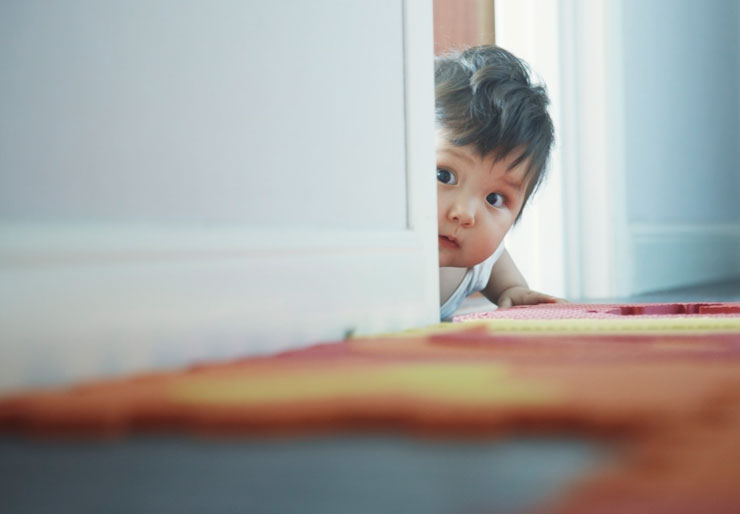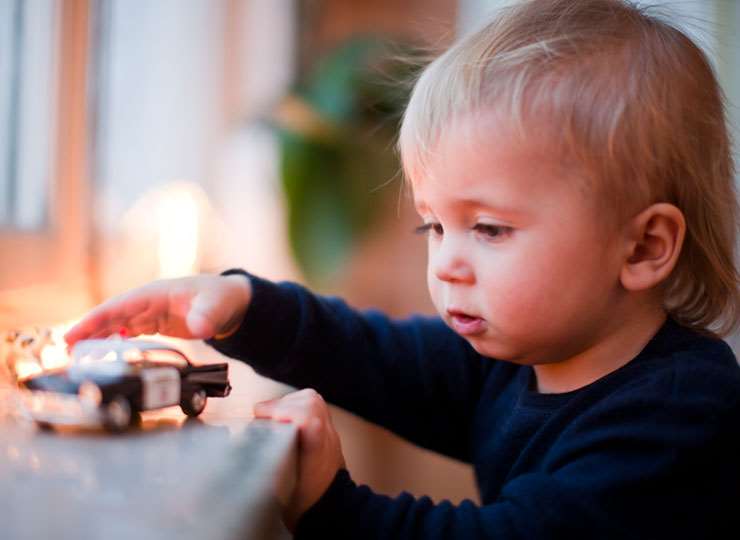

Childproofing your home
Young children like to go exploring around the home. They move quickly, climb on everything and put most things in their mouths. Here are our tips to help you be safe rather than sorry.
Remove loose components
Young children put everything in their mouths. They feel, eat and chew things. This is why it has to be impossible for children to unfasten screws or other small components on beds, pushchairs, baby walkers, etc. If a child puts something like that in their mouth, in the worst case it can choke them.
Protect sharp corners
Young children are constantly moving, but also lose their balance easily and fall over. That’s why it’s important to make sure there are no sharp edges or corners on furniture or other items when you have young children around. Make sharp corners more child-friendly by covering them with rounded plastic or rubber corner guards. You can buy these corner guards in outlets that sell children’s equipment.
Mind the gap
With any equipment for infants or young children, it’s particularly important to watch out for gaps in which a child could become trapped and choke. Gaps must be big enough so that the whole child can fit through them, which means they must be bigger than the diameter of their head. Or, gaps must be small enough to prevent the child getting through any further than chest height if they slip through feet first. If there is a gap big enough for a child to fit its head through, it must also be big enough for the child to get its head back out. That’s why it’s important not to have V-shaped gaps in which a child can become wedged.
Remove knobs and cords
Children’s rooms and children’s equipment must not be fitted with knobs or components that stick out, and there must be no gaps or holes that can trap clothing or cords. These can present a risk of strangulation.
Children’s clothes and equipment must not have long drawstrings or cords that a child can get hold of. If a cord is longer than 22 cm, a child could get this round its neck and be strangled. If drawstrings are looped, the loop must be smaller than the circumference of the child’s head.
Plastic bags and plastic packaging must be kept out of reach of young children. Plastic can cover a child’s nose and mouth and prevent them from breathing.
Avoid wedge hazards
Because children like to touch and feel everything, it's easy for them to become wedged by moveable objects such as beds or playpens, etc. You can prevent this by assembling and locking equipment correctly. It’s important that this equipment cannot be unlocked by children who are outside the bed or playpen.
Follow the instructions for use
All information such as user instructions, maintenance and assembly instructions must be in Norwegian or another Scandinavian language. This information must contain the name of the manufacturer and importer, if the equipment has been imported. You must read and abide by the information.
Some equipment for infants and small children comes with toys attached, or you can buy toys separately and attach them to the equipment. These toys must comply with the safety requirements applicable to toys. It’s not much use the equipment being safe, if it's being used for something that it wasn't designed for. Adults who are supervising children must make sure this doesn't happen.
